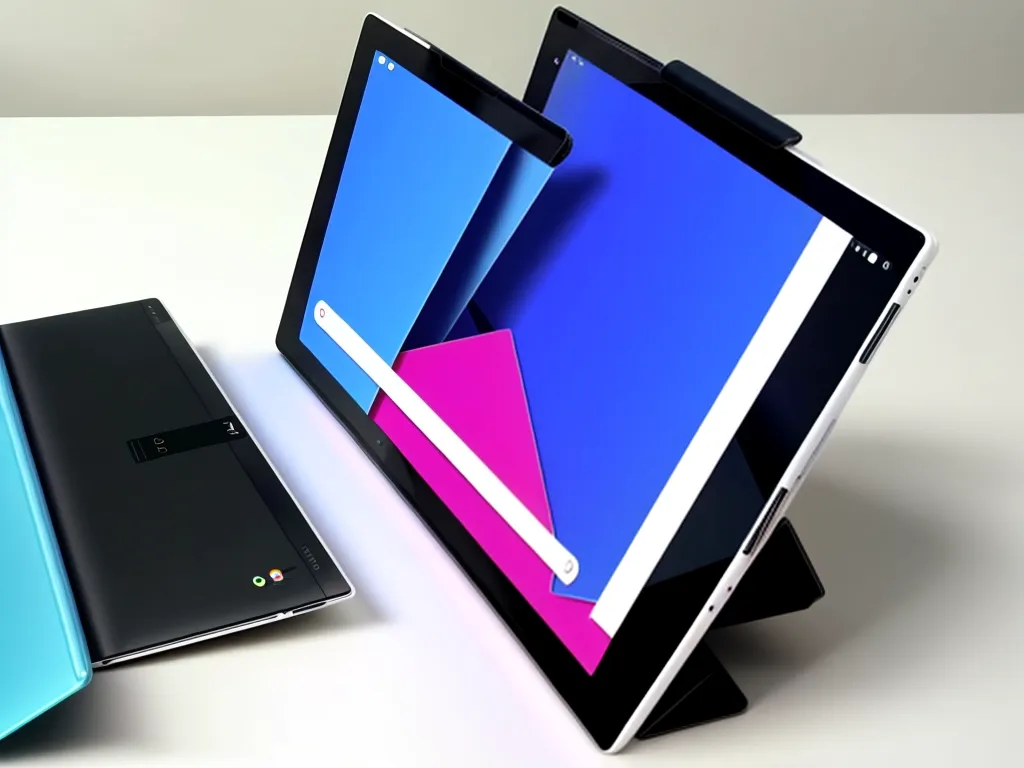
Google has just announced its first foldable tablet, joining the likes of Samsung and Huawei in releasing foldable devices. As exciting as this new form factor is, the big question is – is Google’s foldable tablet actually any good? Let’s take a deep dive and find out.
Introduction to Google’s New Foldable Tablet
Google unveiled its new foldable tablet, named the Pixel Fold, at its recent launch event. Here are the key details about Google’s first foldable device:
- Launch Date: Available for pre-order now, ships in October 2022
- Display: Two displays – 7.6-inch foldable OLED inner display, 5.8-inch OLED cover display
- Processor: Google Tensor G2 chip
- RAM/Storage: 12GB RAM, 256GB/512GB storage options
- Camera: 12MP main, 12MP ultrawide, 10.8MP selfie camera
- Battery: 4400 mAh battery
- Operating System: Android 13 with Pixel customizations
The Pixel Fold joins an elite club of foldable tablets like the Samsung Galaxy Z Fold series and Huawei Mate X series. Google is clearly aiming to compete head-to-head with these established players with its novel form factor.
The Pros – What’s Great About Google’s Foldable Tablet
Here are some of the standout pros that make the Pixel Fold an exciting new entry in the foldable space:
Novel Form Factor
The Pixel Fold sports a completely new form factor for Google, featuring two displays that can flex and fold. The large 7.6″ inner display means you get an immersive visual experience, while the tablet can fold into a compact 5.8” size. This novel design opens up new multitasking capabilities and use cases.
Powerful Internals
With the latest Google Tensor G2 processor and 12GB RAM, the Pixel Fold has flagship-level hardware that can handle demanding apps and multitasking. The fast chipset should deliver a smooth experience.
Software Optimizations
Being a Google device, the Pixel Fold runs a pure Android 13 experience optimized specifically for its foldable displays. Features like two-pane multitasking, flex mode optimizations and seamless screen transitions make the software experience great.
Competitive Pricing
Starting at $1799, the Pixel Fold is competitively priced against the likes of the $1799 Samsung Z Fold 4. Considering you get cutting-edge hardware and software, the pricing is quite fair.
The Cons – Where the Pixel Fold Falls Short
However, the Pixel Fold is not without some downsides and compromises:
Thick Folded Form
Folded shut, the Pixel Fold is quite chunky at 12mm thick. This makes the folded tablet less pocketable than standard phones. The Samsung Z Fold 4 is 9.6mm when folded in contrast.
Small Cover Display
The 5.8” cover display on the folded Pixel Fold is quite small by smartphone standards. It may not be ideal for one-handed use to check notifications etc. The Z Fold 4 has a 6.2” cover display.
Unproven Reliability
As Google’s first foldable, the long-term durability of the Pixel Fold is unproven. Issues like screen creasing or fragility remain a concern, especially with a new form factor.
Camera Lags Behind
While decent, the Pixel Fold’s camera hardware does not seem flagship-grade like on the latest Galaxy or iPhone models. The photography experience lags behind the best conventional slabs.
The Foldable Future Looks Promising
While not perfect, the Pixel Fold moves the foldable category forward in meaningful ways. With its novel design, optimized software, and competitive pricing, Google could disrupt the foldable market dominated by Samsung. If foldable tech keeps improving with future iterations, smartphones with flexible displays look set to go mainstream.
The Pixel Fold may not be an absolute flagship killer yet, but it sets the stage for Google to perfect the formula in coming years. The foldable future looks promising with Google now staking its claim.












